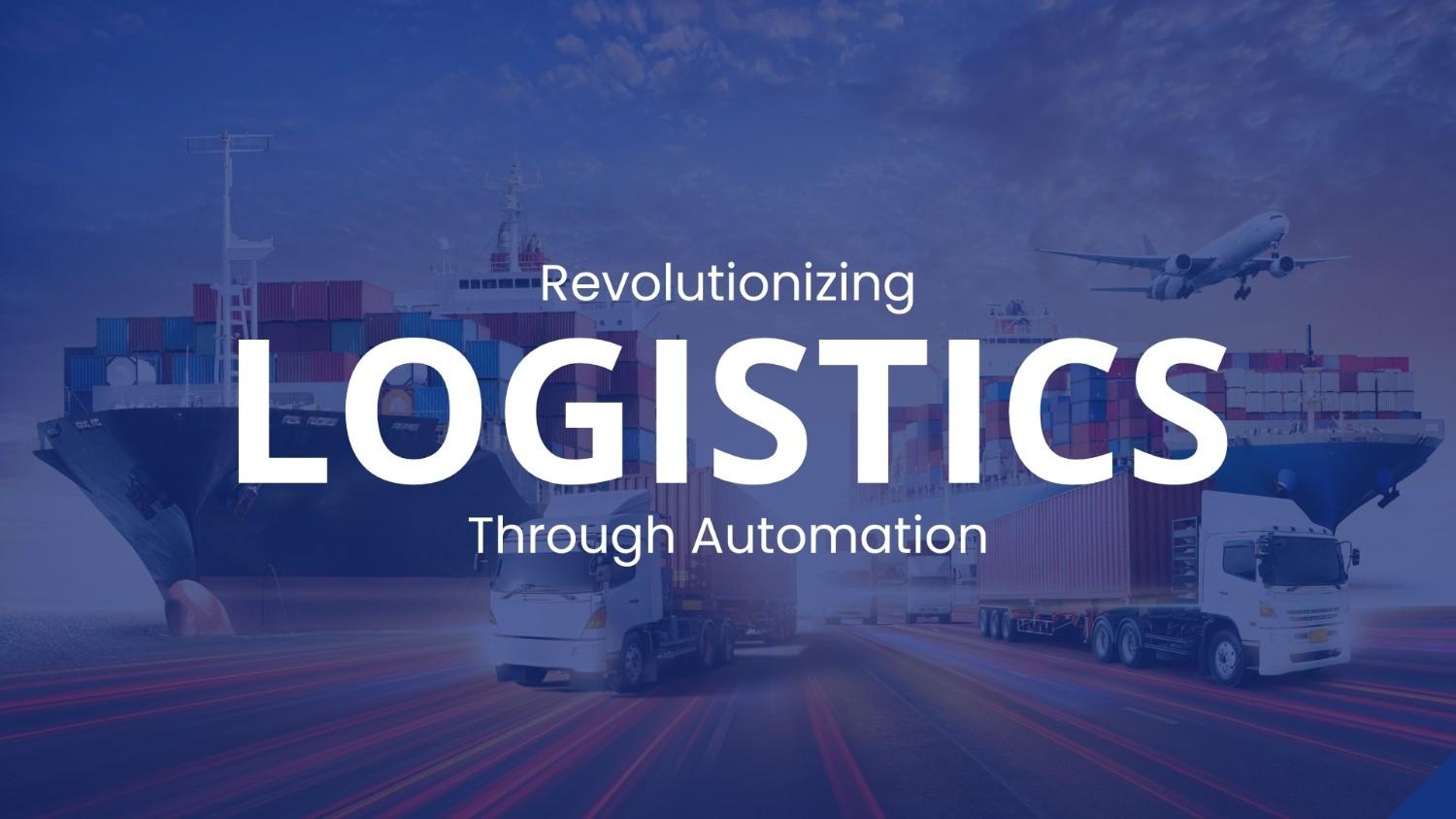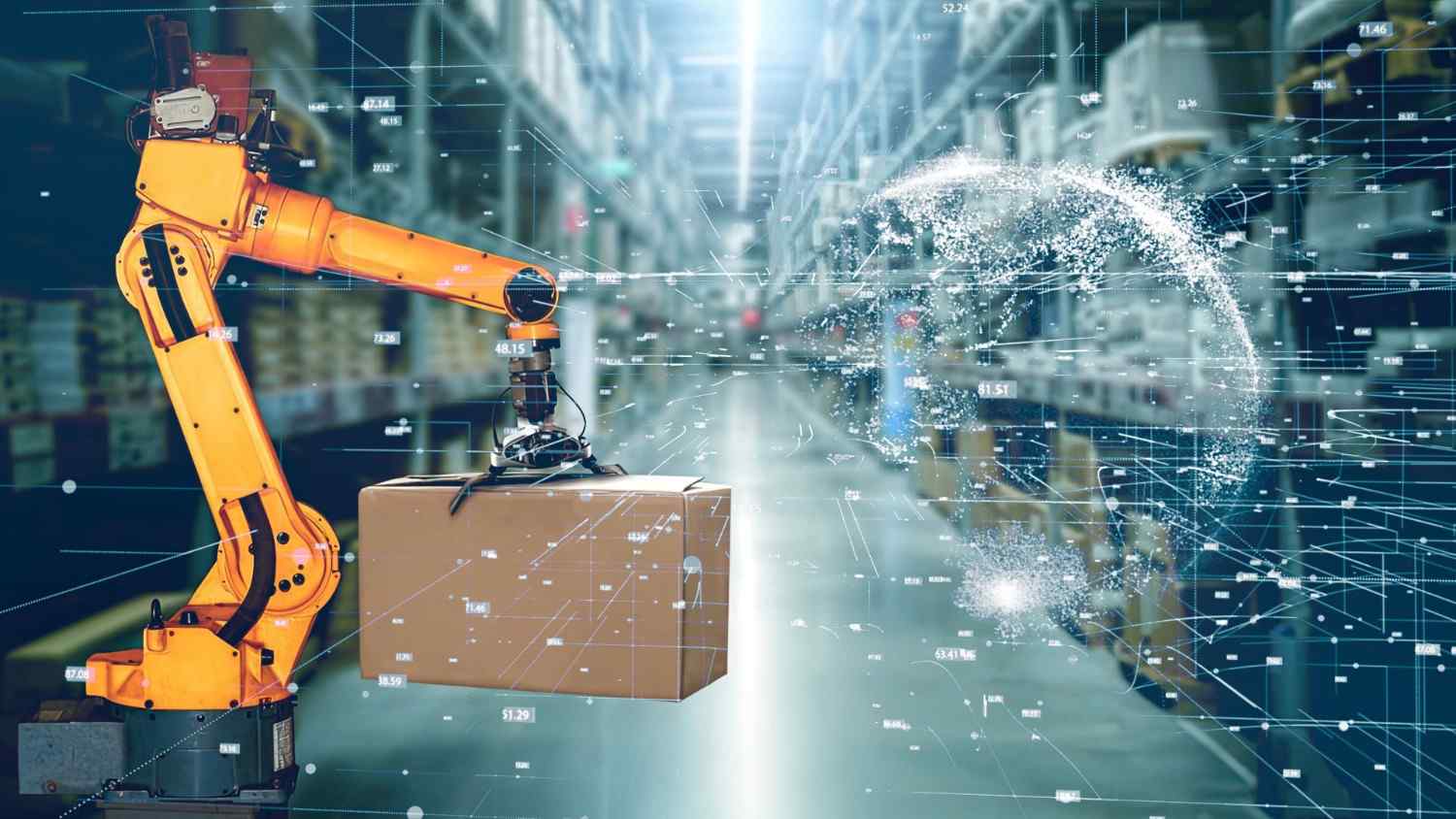
In today’s fast-moving global economy, AI-driven logistics automation is changing how companies scale operations, lower costs, and boost sustainability. As logistics grows complex, companies need smarter solutions to meet higher demands. They must also keep operations efficient and eco-friendly. Fortunately, Artificial Intelligence (AI) offers these solutions by bringing advanced automation to logistics from end to end. AI-driven logistics automation makes processes smoother, but also helps companies achieve scalable growth over the long term.
In this post, we’ll explore how AI is transforming logistics, driving automation, and how Wahyd Logistics addresses big industry challenges, such as “Empty Miles.”
How AI-Driven Logistics Automation Works in Modern Supply Chains
AI-driven logistics automation uses algorithms, machine learning, and predictive analytics to optimize each part of the supply chain. First, it supports smoother warehouse management, more accurate demand forecasting, and better customer experience. As a result, companies can improve accuracy, reduce costs, and scale up efficiently. This also provides a better experience for customers.
Key Benefits of AI-Driven Logistics Automation
- Improved Accuracy: AI processes large amounts of data quickly. Thus, it helps reduce human error and allows for better planning in areas like forecasting, inventory, and route management.
- Cost Efficiency: By automating routine tasks, companies lower operational costs. It also frees up employees for important decision-making.
- Scalability: AI lets businesses expand without major increases in infrastructure or staffing costs.
- Higher Customer Satisfaction: AI improves tracking and timely updates, giving customers a seamless experience.
Core Technologies in AI-Driven Logistics Automation
- Machine Learning: Machine learning helps logistics systems learn from past data. Over time, it recognizes patterns to make better decisions, such as in route planning and demand forecasting.
- Computer Vision: In freight management, computer vision automates sorting, loading, and tracking cargo. This reduces handling errors and boosts efficiency.
- Predictive Analytics: Predictive analytics allows companies to plan for demand changes, manage stock levels, and prevent last-minute problems. Consequently, these tools support data-driven decisions that make logistics smoother.
Wahyd Logistics and AI-Driven Automation: Reducing Empty Miles
Wahyd Logistics is addressing one of the biggest inefficiencies in logistics: Empty Miles. Empty Miles are created when trucks travel without cargo. They waste fuel, drive up costs, and increase emissions. Therefore, Wahyd tackles this problem with AI-driven logistics automation that ensures every mile is used well, saving both money and the environment.
Wahyd’s AI-Driven Solution for Empty Miles
- Real-Time Optimization: Wahyd’s platform finds the best routes instantly. This reduces fuel use and maximizes cost efficiency.
- Dynamic Bidding System: The Wahyd app lets vendors place bids on shipments in real time. As a result, shippers receive cost-effective options, which reduce Empty Miles.
- Reliable Bid Verification: Wahyd’s AI filters and verifies bids, offering only high-quality, reliable options. In turn, this adds transparency and reduces risks.
Real-World Impact: Wahyd’s solution matches shipments with empty trucks on their return trips. By minimizing Empty Miles, Wahyd supports green goals. This AI-powered approach lowers costs, reduces emissions, and conserves fuel.
Applications of AI-Driven Logistics Automation in Supply Chains
The uses of AI-driven logistics automation cover all parts of the supply chain. Specifically, Wahyd Logistics applies these advanced tools to simplify operations, lower costs, and support scalability.
Main Applications in Logistics
- AI in Inventory Management: AI-powered systems help companies like Amazon and Walmart manage stock levels by predicting demand. This reduces overstock or stockouts. Additionally, AI systems analyze market trends, keeping products available without overloading storage.
- AI-Powered Routing and Dispatching: AI-based routing systems, used by logistics leaders such as UPS, find efficient delivery routes. They reduce fuel use, shorten transit times, and keep costs down.
- Automated Customer Service: AI-powered customer service handles routine questions and gives real-time updates, reducing the need for manual support. Wahyd uses similar AI features in its platform, helping customers and transporters receive prompt support, throughout the shipment process.
Example in Action: Major logistics companies, like DHL, use AI-powered forecasting, to better manage inventory and stock levels. This reduces excess stock, prevents stockouts, and ensures goods are ready to meet demand when needed.
The AI Logistics Marketplace: A Hub for AI-Driven Logistics Automation Tools
With the rise of AI-driven logistics automation, companies need easy access to AI tools and services that meet their specific challenges. An AI logistics marketplace provides these tools, offering a wide selection of AI-driven solutions.
How the AI Logistics Marketplace Works
- Accessibility: Businesses can quickly access and use AI-driven solutions without deep technical skills. This makes it easier for them to implement automation.
- Customization: Companies pick tools based on their own needs, ensuring they have the best solutions for their unique operations.
- Cost Savings: AI tools available through marketplaces often cost less than custom-built solutions. Therefore, these options are more affordable, especially for smaller companies.
Scaling Up with AI-Driven Freight Management

Automated freight management is one of the most powerful uses of AI-driven logistics automation. This technology uses machine learning and predictive analytics to simplify shipping, reduce delays, and make better use of resources.
Benefits of Automated Freight Management
- Optimized Routing: AI algorithms calculate the best delivery routes. Consequently, fuel costs and travel times are reduced.
- Improved Load Management: AI reviews cargo weight and volume to ensure trucks are fully loaded and within safe limits. This boosts transport efficiency.
- Predictive Maintenance: Machine learning predicts maintenance needs, preventing unexpected breakdowns and ensuring fleet reliability.
Scalability Through AI: Wahyd’s AI-driven logistics automation helps businesses scale, without high additional costs. By automating essential tasks, Wahyd helps logistics providers stay efficient, even during busy periods.
Case Study: AI-Powered Scalability at DHL: DHL has improved its logistics with AI-driven automation. Using predictive analytics, DHL has optimized its routes, reducing travel times by up to 10%. Additionally, its AI-driven warehouse automation has raised efficiency by 40%, allowing growth without major cost increases.
AI-Driven Sustainable Freight: Cutting Carbon Emissions in Logistics
With sustainability now a major focus, logistics companies need ways to reduce their carbon footprint. AI-driven logistics automation supports sustainable freight, by optimizing processes to lower emissions, fuel use, and waste.
Key Sustainable Technologies in AI Logistics:
- Electric and Autonomous Vehicles: AI supports electric and self-driving fleets, helping logistics companies reduce emissions.
- IoT Sensors: Combined with AI, IoT sensors track energy use in vehicles and warehouses, allowing real-time adjustments.
- Renewable Energy Management: AI optimizes energy use in warehouses, managing lighting, heating, and cooling to cut environmental impact.
Case Study: UPS and Sustainable Logistics: UPS uses AI to support greener logistics. For example, its ORION system has saved millions of gallons of fuel by optimizing delivery routes. Furthermore, UPS also invests in electric delivery vehicles and renewable energy for its facilities, showing how AI-driven logistics automation can support eco-friendly goals.
Future Trends in AI-Driven Logistics Automation
As AI advances, its potential to transform logistics will only increase. From autonomous delivery networks to advanced real-time analytics, the future of AI-driven logistics automation holds great promise.
Key Trends in AI-Driven Logistics
- Improved Predictive Capabilities: As machine learning advances, AI tools will make demand forecasting even more accurate. This will help logistics providers better meet customer needs.
- Autonomous Delivery Networks: AI will manage autonomous vehicle and drone fleets, creating highly efficient, driverless logistics networks.
- Integrated Supply Chains: Future logistics systems will use real-time data sharing, making proactive decisions possible across the entire supply chain.
Challenges to Consider
- Data Privacy: With more automation, companies need strong data protections to prevent breaches.
- Job Adaptation: Automation will change traditional roles, requiring employees to reskill.
- Adoption Costs: Although AI brings long-term savings, the initial investment can be high, especially for smaller companies.
Conclusion: Embracing AI-Driven Logistics for Scalable and Sustainable Growth
The use of AI-driven logistics automation brings unmatched benefits for scalability, efficiency, and sustainability. Wahyd Logistics demonstrates the power of AI in logistics, with a focus on cutting Empty Miles, optimizing routes, and creating sustainable solutions. By investing in AI-driven automation, companies can streamline their operations, improve customer satisfaction, and reduce the environmental impact.
As the logistics industry changes, Wahyd Logistics is ready to lead. Through AI, we empower businesses to build smarter, greener, and more efficient operations. Embracing AI-driven logistics automation is essential for logistics companies, to help them grow efficiently while meeting their sustainability goals.
Experience the future of logistics with Wahyd—where every mile is optimized, every shipment counts, and every decision is backed by AI.






Wahyd Logistics is truly changing the game with its advanced AI solutions in the logistics sector.